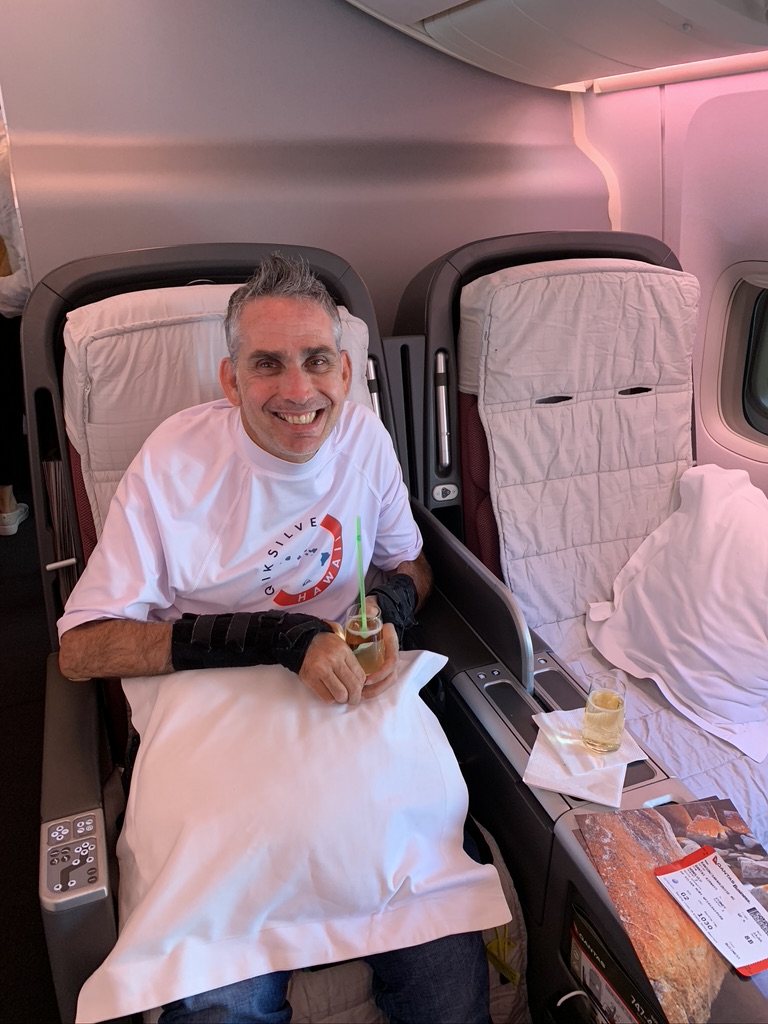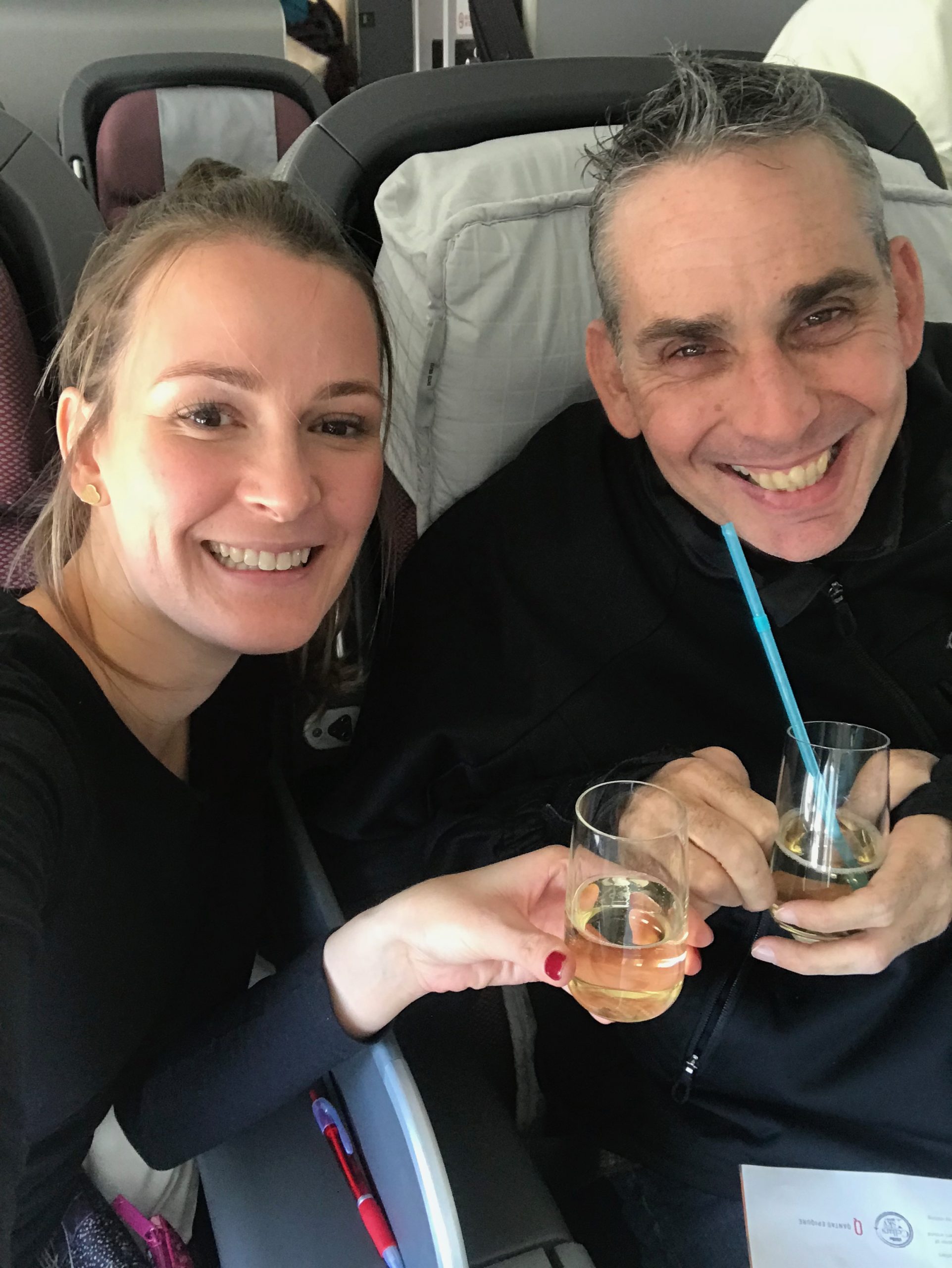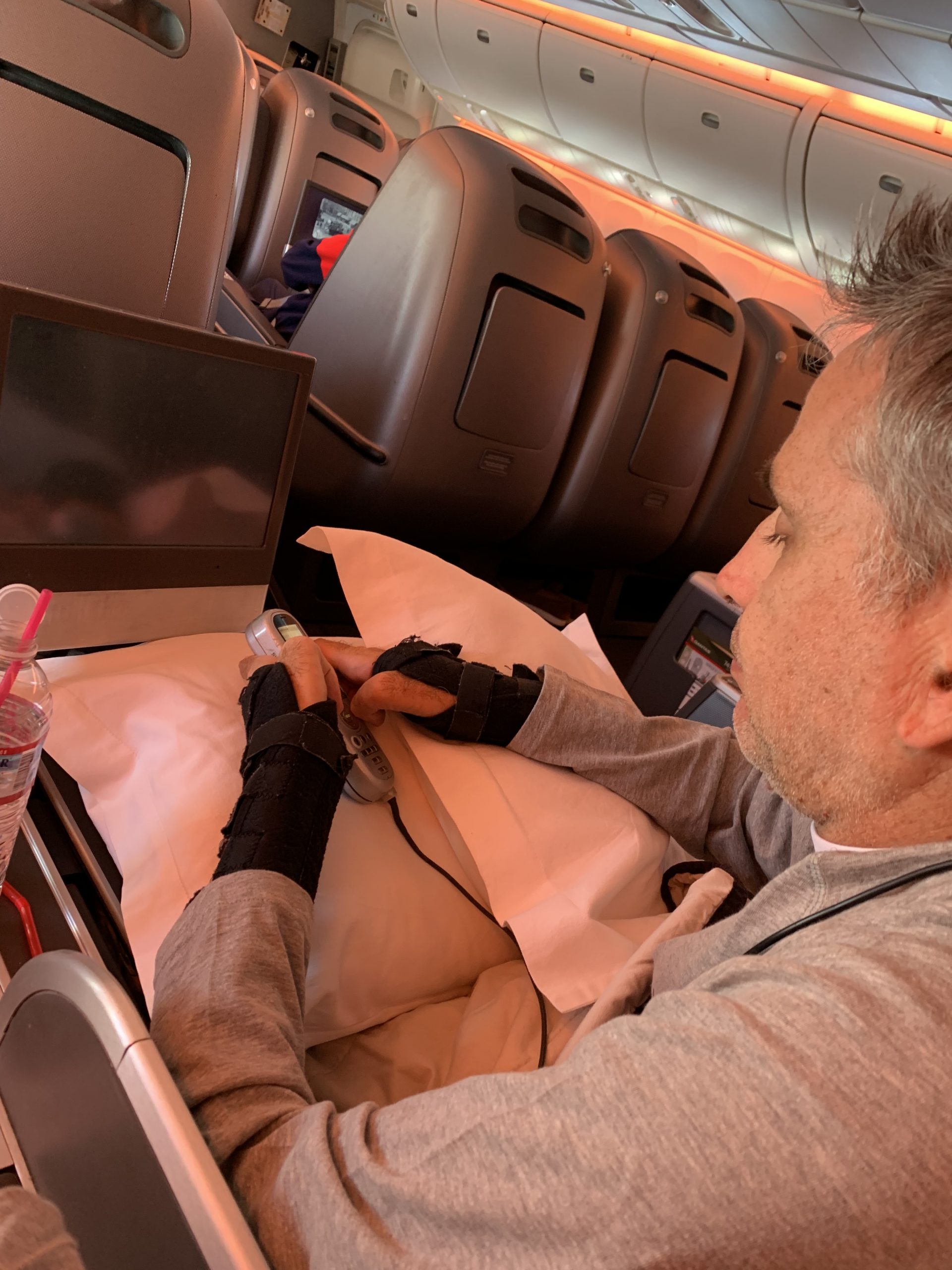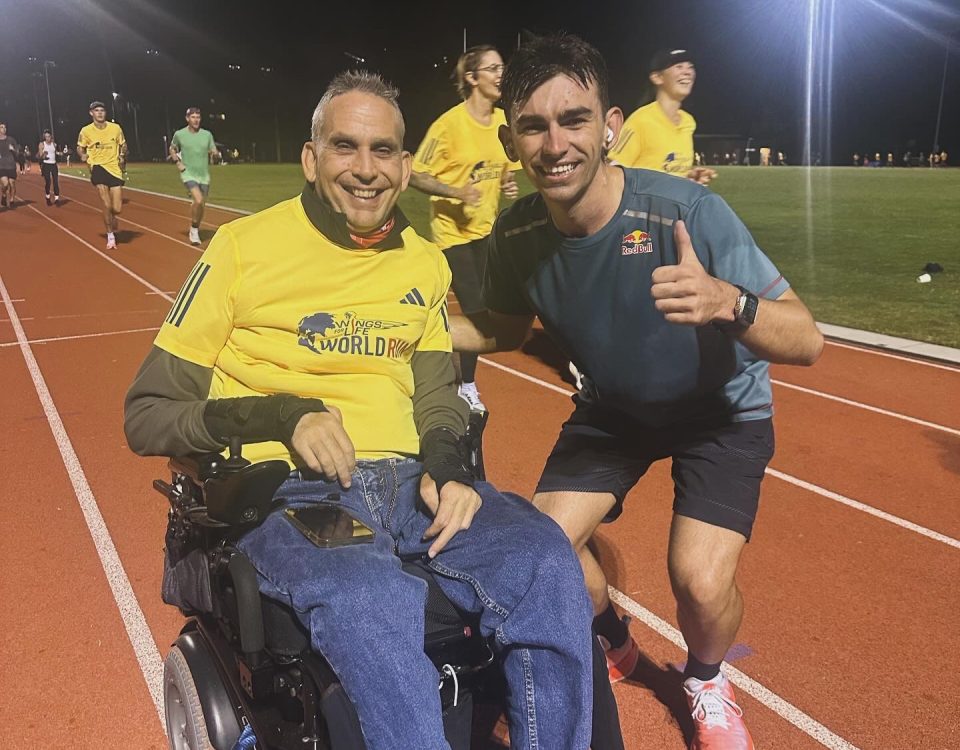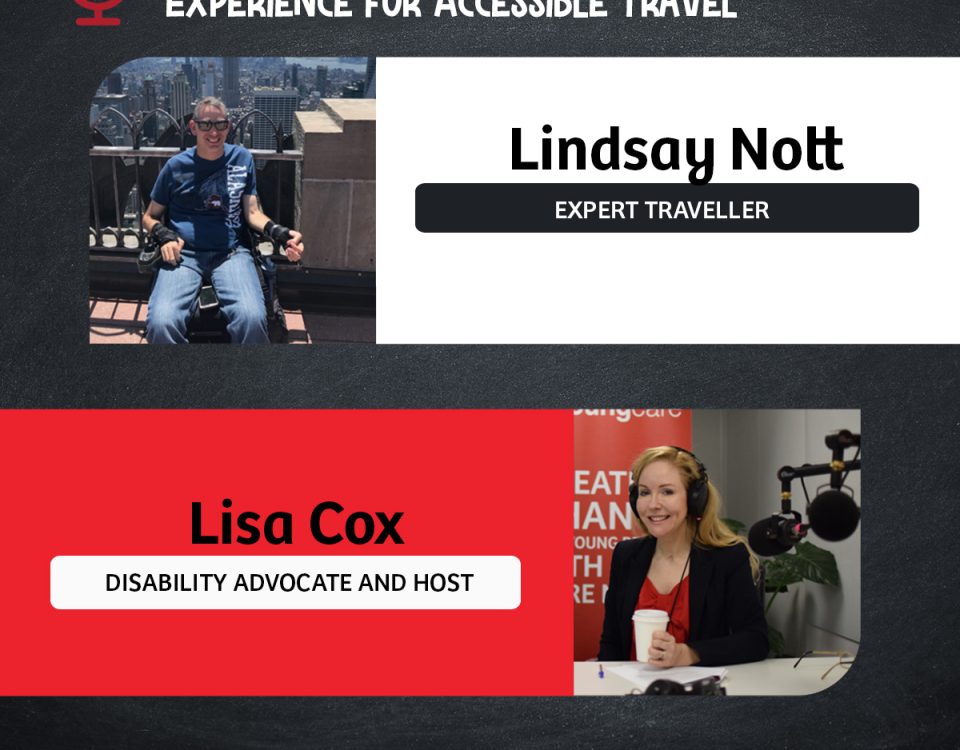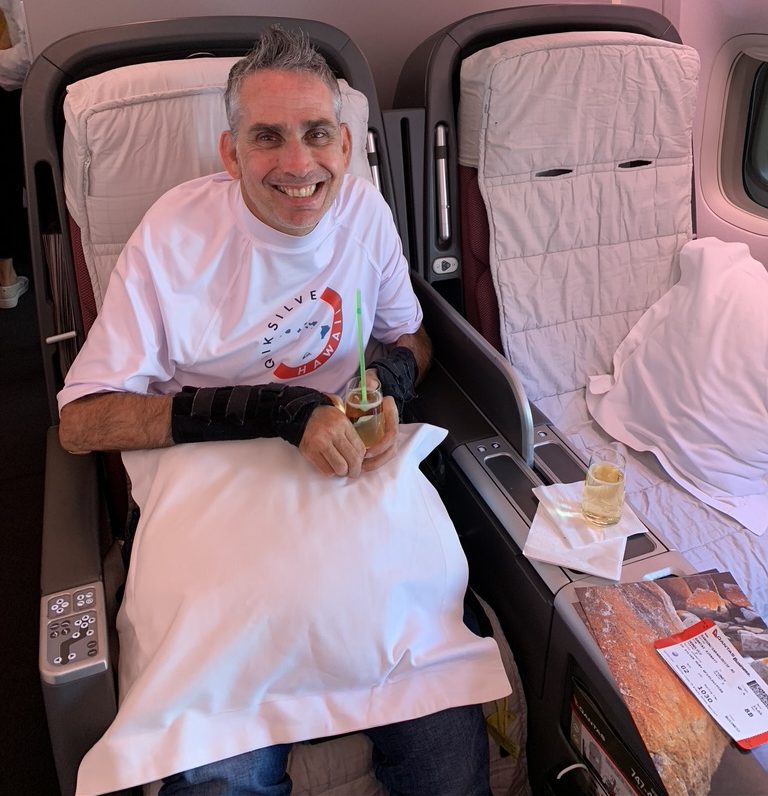
Sitting on a plane

New York, New York
17 April 2021
Temperature Regulation
2 May 2021As you may have noticed by now, I love travelling and have been fortunate enough to travel on over 50 flights since my accident – and counting!
Along the way I have learnt some handy tips and tricks both first-hand and from fellow travellers which I am going to share in this post. Although air travel is a bit more complicated in a chair, domestic and international travel is easily managed with some prior preparation and an open imagination.
Qantas is my preferred airline for my travels both domestically and internationally. When overseas, I choose any international airlines who are affiliated with Qantas given they are normally consistent with the experience I receive.
Airline crew go out of their way to assist all passengers, including people who require extra assistance. Due to my disability, I board the aircraft first to allow privacy and room for the crew to transfer me to my allocated seat which is always an aisle seat. Cabin crew are very understanding of travellers with a disability and will spend five minutes chatting to you to gain a better understanding of my requirements which makes for a more comfortable flight experience.
Depending on the seating configuration of the aircraft, I will have either one or two seats between me and the window. So, my travel buddy is allocated seat beside me and a fellow traveller will have the window seat. Between the airline cabin crew, myself and my travel buddy we explain my requirements and situation to a fellow traveller, and they are very understanding. Given the passenger will have to step over me to take the seat we just hope they don’t take too many bathroom breaks.😀 Given it is difficult to get past me, I always keep a bag of essential items (for me, this includes medications and straws etc.) with my travel buddy for easy access at our feet. For disembarkation, I am the last passenger to leave the aircraft.
When I first began travelling after my accident, I was lifted into the chair by the aircrew however, technology has advanced and now an Eagle hoist does the job (more details coming in a future blog post). To avoid pressure marks when transferring, the aircrew is made aware of this so they ensure I don’t scrape the arm rests. In some airplanes, the armrests can be removed which is very handy!
For anyone who has travelled on an aeroplane, you would know how confined and restrictive the seating arrangements are. Well, imagine travelling with a disability with limited movement and located in the same position for the entire flight. As a tall person with very long legs, I have very little room to the seat in front of me, especially when they recline the chair!
As a person with a spinal cord injury, I have to be conscious of pressure care which for the people who are unaware can lead to a pressure sore (I have experienced this) lengthy recovery from weeks, months and even years of healing. As a precaution, I sit on a ROHO low profile cushion that I can use on the aircraft seat to prevent pressure sores. Sitting on travel cushion increases my overall height and I sit higher than the headrest. My travel buddy adjusts this cushion during the flight as the cushion deflates as the plane gets higher.
Another tip I learnt was to schedule my bowel and bladder routines around flight times. This involved me ensuring I was hydrating but hadn’t drank too much! Before any flight, I will have a bathroom break in preparation/readiness to minimise bathroom breaks. On longer flights, bathroom requirements provide a different challenge, but this is very manageable and easily worked around.
If you’ve never flown in a chair before, I discovered a good strategy to get used to it was getting some domestic flights, which usually range from one hour to four hours, under my belt before I hit the big international ones which require additional preparation given, they may be up to 20 hours!
When flying international in economy seating, I struggle sleeping as I am unable to recline into a position that is comfortable for sleeping. Instead, I work around this by leaving the tray table down with plenty of pillows so that I can lean forward to place my head on these pillows. As you can imagine this is doable and airline crew are very accommodating with providing extra blankets and pillows to allow me to be as comfortable as possible. On the occasion where I have an extra seat available beside me, we can position some pillows and blankets on the spare seat so that I can lean over on these pillows to relieve some pressure and to sleep.
I’m lucky that plane passengers aren’t usually known for their fashion style because when I travel, I make sure I wear comfy clothing and shoes which has a bit of give in them and finish the look off with travel compression stockings!
Recently I have been fortunate enough to travel in business class internationally and domestically which is an awesome experience! The major differences I experienced between business and economy was the extra leg room and larger seats which recline meaning it is much easier to sleep! Overall, this allows for a more relaxed experience. My travel buddy is also able to perform passive exercises on my legs given the more spacious environment which is especially beneficial on long haul flights. I also loved the in-built massage function in the chairs – how could you not? However, for majority of my flights I have been in economy although you’re a bit more squished, it does the job!
Landing is always exciting as I have limited upper body strength, so when the plane lands and slows down my travel buddy will place her arm across my chest as a precaution, so I don't face plant the seat in front.
Overall, air travel being in a chair is similar, yet different to before I had my accident however, it is well and truly achievable with the right preparation.
These thoughts are from my personal experiences so feel free to adjust any of these recommendations to suit you own needs!
